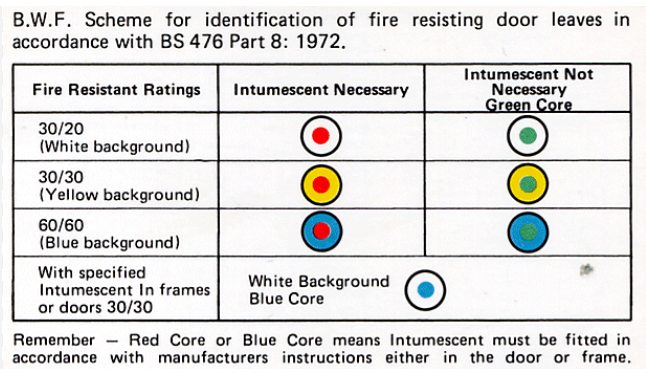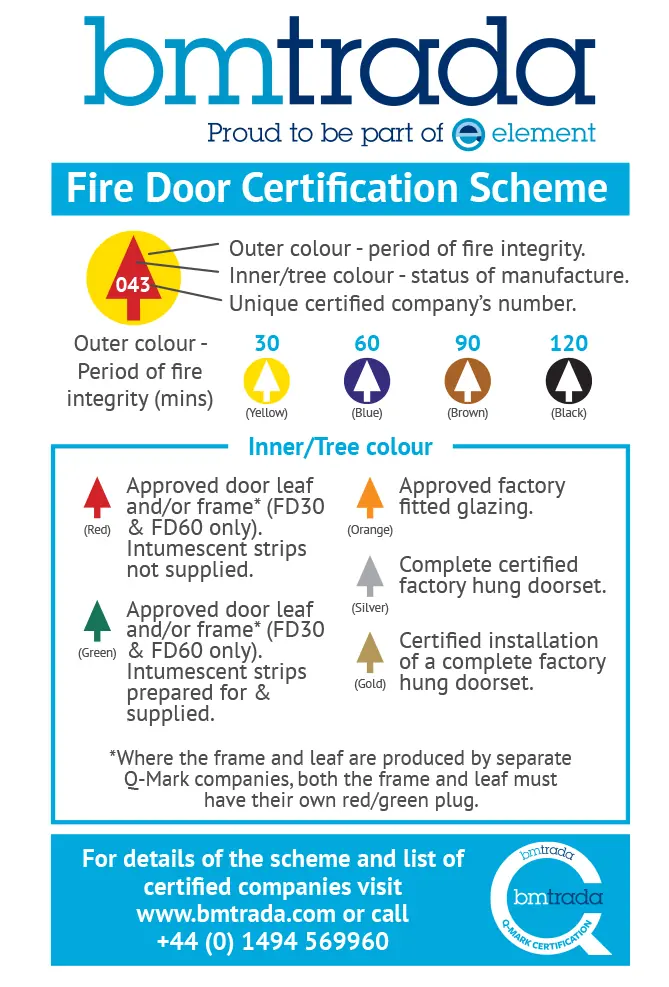-
Posts
2,310 -
Joined
-
Last visited
Posts posted by AnthonyB
-
-
Building Inspector? Is the premises being fitted out and subject to a Building Regulations application? If not they shouldn't be involved.
Also, unless there is a known issue with malicious use of call points there are no grounds to even consider them being removed - and even then it's not the first step.
I'd be minded to ignore them, they don't hold the liability for the premises (or disabled them on the panel until their involvement is over & then put them back on!) -
I've not heard that one before! I'd request them to provide the source (in Government Guidance, not just an assessors opinion) of this requirement.
-
Based on the sources I used, yes.
-
-
This video includes resetting the call point
-
It depends on the size and layout of the premises. A really small building (like a lock up takeaway with a small counter space and adjacent kitchen) may need nothing (unless underneath a flat/flats without 60 minutes fire separation), but larger places of assembly up to 300 persons may need at least a Category M system of manual call points and sounders off a control panel.
You must by law have a written fire risk assessment for your premises carried out by a competent person - this will tell you exactly what you need in your circumstances.
Note that insurance requirements will differ from statutory ones and are often more onerous.
-
Possibly none - as far as I'm aware the BWF 'bullseye' plugs and the BM-TRADA 'fir tree' plugs that replace them are the only ones used/in use. Plugs were used for a time purely as a manufacturers mark (such as one that was in red, white & blue segments) and not representing any fire performance.
Our forum's resident fire door expert will hopefully be along to confirm/deny at some point -
Who is advising this and for what purpose? Is this a single private dwelling?
-
You do not need a dedicated landlord supply as long as pre payment meters aren't used, Part 6 does allow this.
A small building like yours may have sufficient fire resistance to not require a strategy change to evacuate and thus require a common alarm - a small hallway wouldn't require smoke control for stay put either.
Whilst a converted house pre 1991 is likely to require an evacuation strategy and common alarm (including devices into each flat) it's not automatic ,just as it isn't automatic that a post 1991 conversion will always be stay put & no alarm - it depends on the premises and there are both older conversions that can be stay put and newer ones that can't.Was there any attempt to determine the level of compartmentation in the FRA or was it an automatic assumption it needed the change?
The guidance is applicable to buildings of all ages and has a statutory status where not following it tends to prove a breach of the legislation so it's wise to follow it - if it is being correctly applied to your situation.
Grade F devices would be acceptable as a short term solution with a view to installing the more robust Grade D in due course.
-
Can you escape in either direction along the walkway?
-
Rough guide for existing premises from current guidance:
Notional 30 minutes fire resistance – typically timber floors with lath and plaster ceilings.
Full 30 minutes fire resistance – typically timber floors with plasterboard ceilingsGuidance for uprating timber floors accepted a 12.5mm plasterboard (or 6mm of certain calcium silicate board such as Promat Masterboard) with a plaster skim to the underside of the joists, although different types of board products require different thicknesses and need checking with a manufacturer
-
It complied at the time of last relevant 'building work' so unless carrying out alterations which would require the application of current standards you are fine.
-
BS5266 - it doesn't say you don't need them but doesn't list them as being where you do - similarly with the gov.uk fire safety guides
-
Utter nonsense.
Grade D is mains with battery back up, D1 being tamperproof back up, D2 user replaceable back up. All devices are the same power source and interlinkable.A battery only system is Grade F and only really suitable for legacy single dwellings and flats and over time would be phased out as new, builds, conversions and rewires see Grade D installed as minimum.
You don't mix Grades other than a HMO or conversion to flats where you may have a Grade A common system and Grade D to individual flats/bedsits
Grade D:LD2 is a system comprising interlinked mains powered with back up smoke & heat alarms with smoke to Alarms in hallways and landings (circulation spaces & escape routes) plus high risk rooms (at least heat to kitchen and smoke to principle habitable room, i.e. living room)
The only situation I could see mixed in place is where the statutory requirement is Grade D:LD3 (new builds, re-wires, etc although LD2 is more common now) and additional voluntary protection is provided to other areas and to save money and ease installation Grade F is used - however unless interlinked the added value is grossly reduced (Grade F are more likely to be removed, flat battery or no battery hence the move towards Grade D)
-
Possibly. Depending on the conversion work & materials used you may have 30 mins FR already.
-
On 17/01/2024 at 19:19, Guest Anthony M said:
HI Guys,
Are you able to advise on a smoke vent concern please?
Its a four storey purpose built block, probably built in 80's.
3 flats on ground
6 flats on first
6 flats on second
6 flats on third.There are no lobbies, its all open corridors throughout.
All doors to flats and cupboards are FD30s.
Travel distance seems to be 10m from furthest door to stair area
There only VENTILATION is the front and rear entrance/exit doors at the bottom, and a high level manually openable roof hatch on the third floor. But you would need a ladder to reach it as its quite high up.
There is no possible way to install windows on any floor.
I don't think we need to upgrade to AOV because the Purpose Built Guide says that as the block is less than six storeys, and is unlobbied, manually opening vents or windows are acceptable (as per 62.11 of LGA Fire safety in purpose-built blocks of flats).'
But I am wondering if our set up is acceptable of just one out of reach manually opening hatch at top of stairwell, of should we change the roof hatch to remotely opening, or at least connect to a handle which can be operated from the landing level?
Thank you so much for any advice.
Kind regards,
Ant M
I'd need to see it as part of an FRA to be sure, but the current edition of the official guidance would allow, as a legacy building, OV. However they would need to be readily openable so some alterations would be necessary as you suggest
-
No, individual bedrooms don't automatically require emergency lighting under standards or guidance, it's bending the terminology in BS5266 to sell more lighting & installation.
-
Fortunately we still have some UK manufacturers of EL - try these who may have some insight as they've been around over 50 years - https://blelighting.co.uk/
-
Whilst recent changes in legislation have been more prescriptive in maintenance intervals there has always been a requirement for planned maintenance of fire doors under Article 17 of the Fire Safety Order and this has been re-emphasised in the latest guidance due to confusion that it was new or only applied to certain heights of building.
-
This would be subject to Building Regulations so this would be your reference: https://assets.publishing.service.gov.uk/media/639ae7e98fa8f5069839c7d7/Approved_Document_B__fire_safety__volume_1_-_Dwellings__2019_edition_incorporating_2020_and_2022_amendments.pdf
-
It's not anywhere near as simple as that.
A pre-1991 conversion would need extensive structural work to upgrade the fire resistance of all the ceilings and both the walls between flats and the walls between flats and common parts (including providing walls in any roof void) to give 60 minutes fire resistance. It would also need some form of smoke control system.Only then would it be suitable for 'stay put' and not need a site wide common alarm.
Pulling down ceilings/pulling up floors, stripping back walls, etc to make good the construction is quite impractical before even trying to retrofit smoke control so the usual approach is for a full evacuation policy which requires the fire alarm system as described in the FRA.
As a leaseholder you would be liable for a proportion of the costs as would the other leaseholders who let out rather than occupy. -
The Regulatory Reform (Fire Safety) Order 2005 - 8 Duty to take general fire precautions.
The fire stopping forms part of the general fire precautions to ensure, so far as is reasonably practicable, the safety of any of his employees; and in relation to relevant persons who are not his employees, take such general fire precautions as may reasonably be required in the circumstances of the case to ensure that the premises are safe - by stopping the spread of fire/smoke though the building affecting escape.
-
From the applicable Government guidance (https://assets.publishing.service.gov.uk/media/64257cff2fa8480013ec0fec/A_guide_to_making_your_small_paying-guest-accommodation_safe_from_fire.pdf)
"In the event of a fire, evacuating the premises is the safest thing to do and guests should not be expected to use firefighting equipment.
If you have staff on the premises, or if they regularly visit the premises, firefighting equipment should be provided, and staff should be trained on how to use the equipment.
You will need to make sure that the instructions on how to use any firefighting equipment are clear, that there is a warning that evacuation is preferable, and that staff should not put themselves at risk or tackle anything other than a very small fire.
In self-catering accommodation, although guests are not expected to use fire-fighting equipment, you may wish to provide a small multi-purpose fire extinguisher and/or fire
blanket in the kitchen area.You can buy suitable multi-purpose extinguishers, guaranteed for five years, from a range of larger DIY outlets. You should check the gauge regularly to make sure the ‘stored pressure’ has not leaked. Low maintenance 10-year extinguishers are also available. Multi-purpose powder fire extinguishers should not be provided, as they are not suitable for use in enclosed spaces."
5 year multi purpose extinguisher https://www.safelincs.co.uk/1-litre-water-mist-fire-extinguisher-ultrafire/
Low maintenance multi purpose extinguisher https://www.safelincs.co.uk/britannia-p50-2ltr-water-mist/
-
There is nothing to assess other than the external wall which would inevitably be low risk due to the small height of the property, it would be pointless to have an FRA as 99% of it would just say 'n/a' Some of the government guidance has said small sites like this are not intended to be subject to the full legal regime that would if there were areas in common.




Old style fire door identification with plugs
in Fire Doors and Accessories
Posted
I'll admit I didn't think of checking the Q mark plugs as they seem even rarer than the older BWF ones
